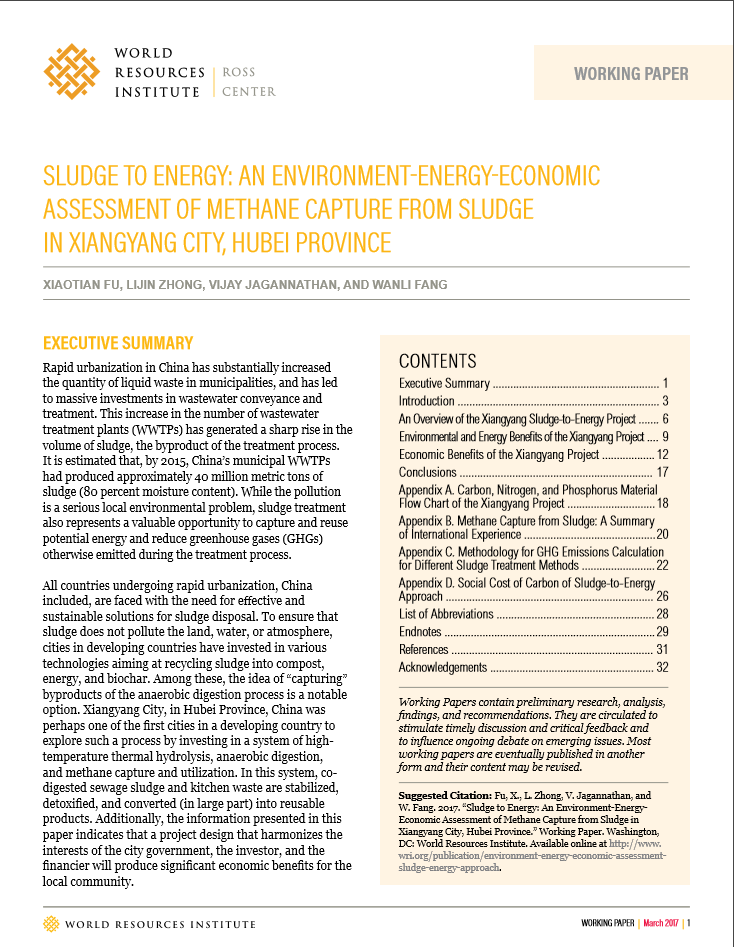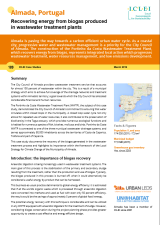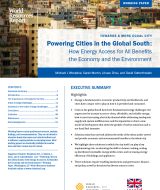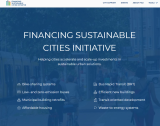
-
Country/City
Xiangyang City, Hubei Province
-
Topics
Renewable Energy, Management, Recycling, Disposal
-
Published On
March 1, 2017
-
Author(s)
Xiaotian Fu, Lijin Zhong, Vijay Jagannathan and Wanli Fang
Rapid urbanization in China has substantially increased the quantity of liquid waste in municipalities, and has simultaneously engendered massive investments in wastewater conveyance and treatment. This increase in the number of wastewater treatment plants has generated a sharp rise in the volume of sludge, the byproduct of the treatment process. While the pollution is a serious local environmental problem, sludge treatment is also a valuable global opportunity to capture and reuse the considerable potential energy and reduce greenhouse gases otherwise emitted during the treatment process. All countries undergoing rapid urbanization, China included, are faced with the need for effective and sustainable solutions for sludge disposal. To ensure the sludge does not pollute the land, water, or atmosphere, cities have invested in various technologies aimed at recycling sludge into compost, energy, and biochar. Among these, the idea of “capturing” byproducts of the anaerobic digestion process is a notable option. Xiangyang City of Hubei Province, China was perhaps one of the first cities in a developing country to explore such a process by investing in a system of “high-temperature thermal hydrolysis, anaerobic digestion, and methane capture and utilization.” This paper summarizes Xiangyang’s experiences and provides insights as to how other cities in China and other developing countries facing similar challenges can address their sludge disposal problems in a sustainable manner.
Download the paper here.
Download
870.64 KB



